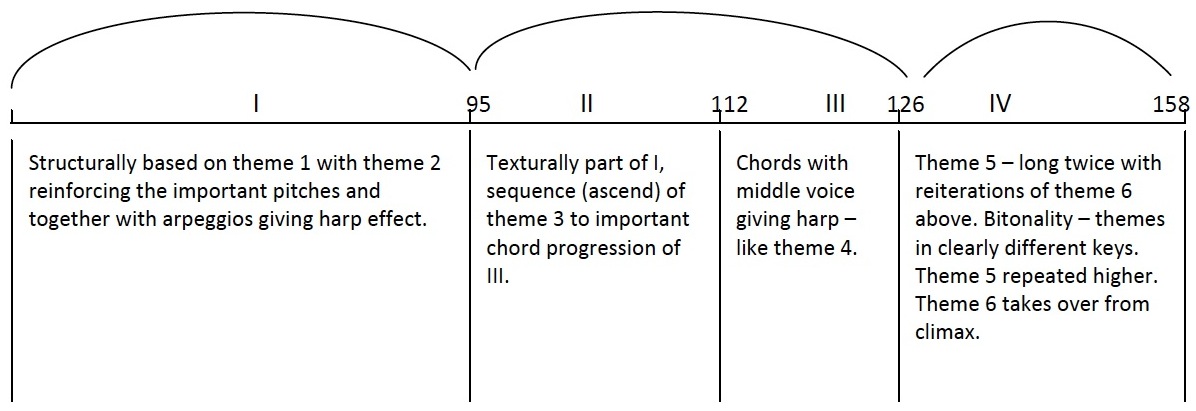Alonso Mudarra
Fantasía 10, que contrahace la harpa en la manera de Ludovico
Tres libros de música en cifra (1546), fol. I/13
mu012
| Source title | Fa[n]tasia que co[n]trahaze la harpa e[n] la manera de Luduuico. es difficil hasta ser entendida. |
|---|---|
| Title in contents | Otra fantasia q[ue] co[n]trahaze la harpa en la manera de luduuico. |
| Text incipit |

Music
Category abstract
Genre fantasia
Fantasia type Id
Mode 2
Voices 4
Length (compases) 158
Vihuela
Tuning G
Courses 6
Final VI/0
Highest I/7
Lowest VI/0
Difficulty not specified
Tempo fast
Song Text
Language
Vocal notation
Commentary
Mudarra’s most famous fantasia. It pays homage to the harpist Ludovico who flourished in Mantua, Ferrara and Naples from the 1480s, and who then came to Spain with the exiled Ferrante of Naples. On his identity see Bermudez (berm1994, berm2002). Bermudo attests that Ludovico was able to play chromatic notes on a diatonic harp by shortening the string with his finger. He was apparently legendary for this ability.
When Mudarra came to pay him homage in his Tres Libros, Ludovico would have been only a memory. Perhaps Mudarra might have heard him play at some banquet organised by his patrons. Mudarra chose a unique formal organisation structure to reflect probably what he understood to be the way that musicians of that generation improvised fantasia, by improvising on a ground. This one is built on three variations on the formula that was known as the “pavana” bu that by the 1590s had transformed into the “folia” Mudarra cleverly avoids any internal cadences within the work by substituting a chord on the 4th degree of the mode each time that a cadence on the modal final is set up by expectation. This means (on a vihuela in G) that all melodic cadences on G are harmonised with a chord on C that allows the music to continue forward with any closes. The music is set as three variations on the “pavana” of 95, 31 and 32 compases. It is at the beginning of variation 3 that Mudarra adds: “Desde aquí fasta açerca del final ay Algunas falsas, tañiéndose bien no pareçen mal”
The fame of the work due to its exceptional harmony, clarity of direction, and particular idiomatic appropriateness and clever devices. The work forms three intensity curves as shown, and can be divided texturally into 4. The descending 3rd is important as an interval, melodically. The harmonic framework likewise and the intensity of I can be traced by the pattern & direction of the lower notes of the descend 3rd. There is no imitation.

Editions
Literature
Recordings
rogers-maz01 ¡Baylado!. Music of Renaissance Spain The Terra Nova Consort ensemble Milán Mudarra
eisenhardt03 La Guitarre Royalle Lex Eisenhardt Milán Narváez Fuenllana Mudarra
moreno02 La Guitarra Española, vol 1 José Miguel Moreno solo Narváez, Mudarra, López
wallace05 Delphín Frank Wallace solo Milán Fuenllana Narváez Mudarra Daza
smith06 Alonso Mudarra - Tres libros de musica en cifras para vihuela Hopkinson Smith solo Mudarra
maier01 The Art of Vihuela Ralph Maier solo Milán Narváez Mudarra Valderrábano Fuenllana Daza
north01 A Golden Treasure of Renaissance Music Nigel North solo Mudarra
north02 Guitar Collection Nigel North, Maggie Cole solo Mudarra Milán Narváez
bream01 Guitarra: The Guitar in Spain Julian Bream solo Mudarra Milán Narváez
bream03 Music of Spain Julian Bream solo Milán Narváez Mudarra
mito01 Music for vihuela 2: O gloriosa domina Shigeo Mito solo Milán Mudarra Narváez
A Song of David. Music of the Sephardim and Renaissance Spain La Rondinella Mudarra, Narváez
hesperion05 Folias & Canarios Hespèrion XX. Jordi Savall solo Mudarra Narváez
cherevko01 Silva de Vihuelas Dimitry Cherevko Milán Narváez Mudarra Valderrábano